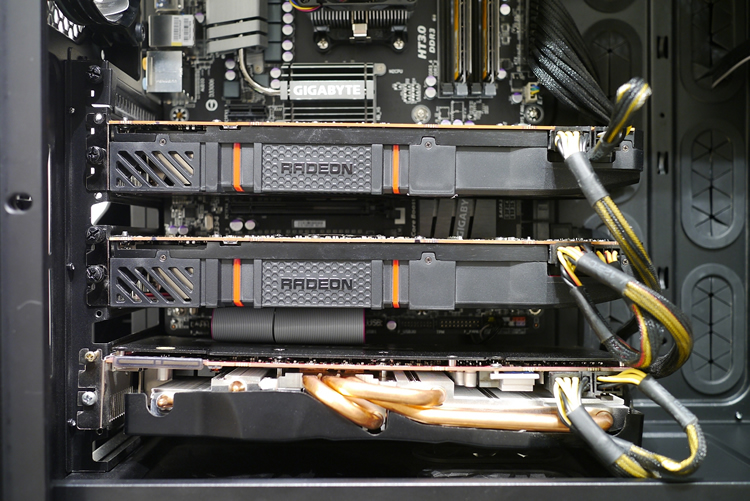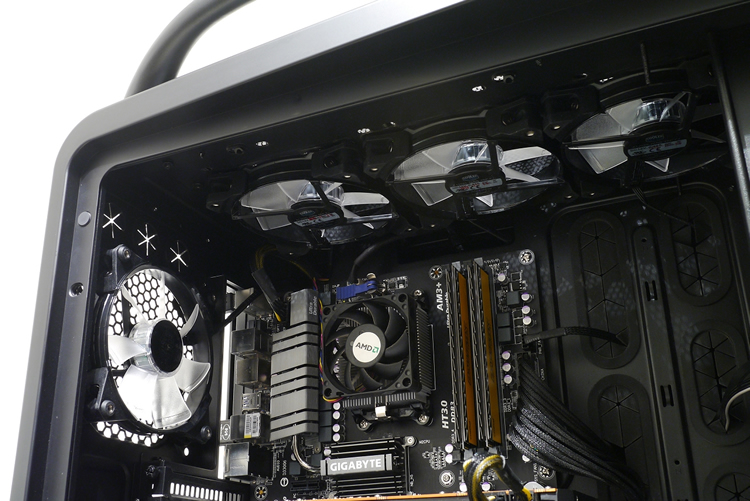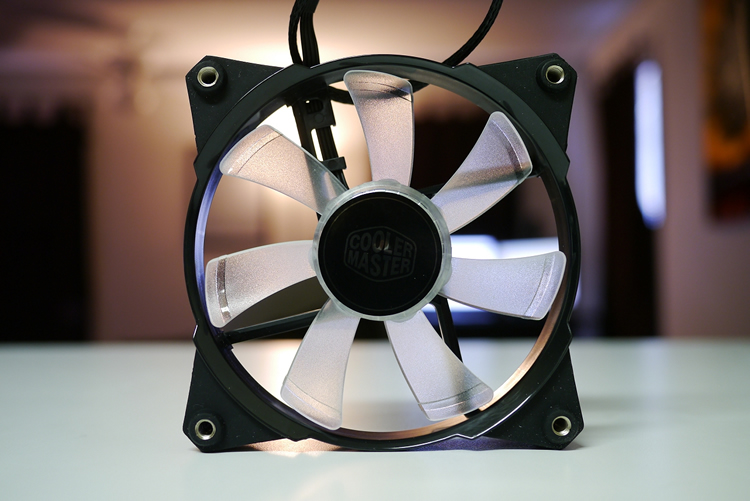It's hard not to be august ames eroticeintrigued by Bitcoin, the peer-to-peer digital currency devised by the mysterious Satoshi Nakamoto (presumably a pseudonym). The Bitcoin network went online in early 2009 as the first truly successful attempt at creating virtual money, though it earned little attention until last year when the currency's value jumped from $13 to $1,000 on public exchanges like BTC-E.
Many who mined early and actually kept their haul suddenly realized they were millionaires. Others kicked themselves for not jumping in sooner but one thing was clear: everyone wanted in on the action – and not necessarily to get rich quick. For hardware enthusiasts like me, it's just another opportunity to build and optimize a system, though I wouldn't complain about making a few bucks in the process.
There are two ways to get into Bitcoins: buy them or mine them. Mining Bitcoins takes a lot of effort (processing power) to create (mine) new currency. The underlying process behind mining is extremely complicated so for the sake of brevity, I'll skip most of the in-depth stuff and instead break it down into layman's terms. If you want the long version, I recommend reading this article by Michael Nielsen or watching this:
Essentially, processing power is used to solve complex math problems and miners who complete them first are rewarded Bitcoins. Early on, traditional desktop CPUs were used to solve these problems but as more people got into mining, more processing power was needed to achieve similar payouts. People quickly realized that GPUs could solve these problems at a 50 to 100 times faster rate than CPUs.
Despite boosting mining speed, GPUs proved less than ideal because of their power draw and resulting heat. Bitcoin miners eventually transitioned to FPGAs (Field Programmable Gate Arrays), which brought a five-fold improvement to consumption levels. By mid-2012, FPGAs lost appeal with the arrival of fully functional application-specific integrated circuit (ASIC) systems, today's standard for Bitcoin mining.
Needless to say, Bitcoin mining is now a serious endeavor and unless you're prepared to compete with professional mining operations like this guy, don't waste your time. Fortunately, however, Bitcoin's success has spawned many other virtual currencies, with nearly half a dozen deemed "major" cryptocurrencies on Wikipedia. Of those, Litecoin is among the most popular alternative to Bitcoin.

As its name suggests, Litecoin is based on Bitcoin's technology but differs in that it targets a faster block rate and uses scrypt as the proof-of-work scheme when mining. Unlike the Bitcoin network, which can only ever have 21 million coins, the Litecoin network will allow for 84 million coins to exist once they're all mined. To use a common analogy, people say Litecoin is the silver to Bitcoin's gold.
With the network still in relative infancy, Litecoin mining is still financially viable and is still best done using traditional desktop graphics cards because ASIC Litecoin miners don't exist (yet).
If you're looking to treat virtual coin mining as a hobby, Litecoins are probably the best bet right now and we'll show you how to get started with choosing and configuring the hardware and software you'll need. Also note we are aiming this article to PC enthusiasts who likely have spare hardware around, separating our project from milk crate builds, this seems like the most logical approach for us to get started.
Before you start building from scratch, I recommend taking inventory of your spare components. It also can't hurt to see if your friends or family have old parts. As a hardware enthusiast, I already had access to a case, retired hard drives (solid state drives are a waste here), an old optical drive as well as a spare keyboard. I also got an AMD Sempron 140 from a friend. As you'll soon learn CPU performance is mostly irrelevant.
GPUs are what matter if you want to mine Litecoins. The Litecoin Hardware Comparison Wiki offers a great comparison of mining performance but here's the short of it: forget about Nvidia and set your sights on AMD's Radeon R9 series. You'll get the best performance from a 290x card but it's also the most expensive. The 7950 is another popular choice but they're harder to come by with their age.

The R9 280x is currently regarded as the most popular choice for Litecoin mining in terms of price versus performance. Unfortunately, between holiday shoppers and coin miners buying up the R9 series, you can expect to pay a $100+ price premium than when the cards first launched. For a month or so, it was virtually impossible to find cards in stock at any major online retailer, but the market isn't quite as dry now.
I bought two 290x GPUs and a single 280x from three different manufacturers – not because I wanted different brands, but it's all I could get my hands on at the time. Specifically, I'm using a HIS 290x, another 290x from Sapphire and a PowerColor 280x. The two 290x cards are essentially identical as both are reference designs with AMD's cooling solution while the 280x has an aftermarket heatsink.

Surprisingly, most mining tutorials suggest putting your hardware in a plastic crate and cooling it with a box fan, but that didn't work for me at home. The case (or milk crate) you select will determine the capacity of your miner. I used Cooler Master's Cosmos II – partly because it's my favorite chassis but mostly because it's what I had on hand. Plus, it's a huge case and that means more GPUs fit.
With three R9 series cards in my miner, I opted for a motherboard with four PCIe x16 slots (Gigabyte's GA-990FXA-UD3). While your choice in memory isn't particularly important – I bought two 4GB sticks of Crucial Ballistix memory because it was on sale – you'll definitely want to research power supplies, compare the advertised wattage and 12v rail output with what your GPUs need.

I went for SilverStone's ST1500, a 1500W, 80 PLUS Silver unit. Aside from meeting my power needs, the ST1500's modular design is useful for maximizing airflow. I've had good luck with SilverStone PSUs over the years and this model proved no different. Whatever you do, don't skimp here. Get something rated for more than you'll need. You might be surprised at just how much power three high-end GPUs require.
These parts aren't necessary, but I found them worth buying. I picked up a single PCIe x16 riser cable to space out the cards as much as possible for cooling. I also bought the Tripp Lite UltraBlok Isobar protector, a Medialink Wireless-N USB adapter (Ethernet is fine, wireless was just more practical at my place), and a Kill-A-Watt electricity usage monitor to see exactly much power your miner is drawing.
After stripping it down, I upgraded the Cosmos II's preinstalled fans. I initially replaced the stock 200mm intake fan with a Spectre Pro from BitFenix which supposedly moves more air at 148.72 CFM @ 900 RPM. It was a letdown, however as the fan felt like it barely moved any air and as the main fan supplying air to the graphics cards, it wasn't enough.
I replaced BitFenix's fan with a 120mm x 38mm model 4715KL-04W-B49 from NMB – taken from a Dell tower server. What's more important than a specific fan recommendation here is noting that the noise of your chassis fans should be a secondary concern to their airflow, not least because your GPUs will likely be louder than any other fans, so don't be discouraged from using one with a high dBA rating.

Along with a second NMB fan (120mm x 25mm rated at 92 CFM) exhausting air from my GPUs out the left panel, I used three Cooler Master JetFlo 120s as top intakes, another as a rear exhaust, one in the front bottom as an intake and two more to blow air into the lower chamber for the power supply (picture below). This may not be an "ideal" layout on paper given that hot air rises, but this isn't a traditional build either.
I arrived at this configuration after countless hours of trial and error. Short of removing the side panel and using a box fan to flood the case with air, it's the best possible layout given the hardware and cooling I have on hand. If you can't keep temperatures under control with case fans, you can trim a few degrees off the top by replacing the GPU's stock thermal paste.


Keep in mind that if you're using a high-power fan, you'll want to attach it directly to your power supply instead of a motherboard header or a low-power fan controller to avoid damaging either.
 SpaceX's BFR has a new name. Elon Musk is calling it Starship.
SpaceX's BFR has a new name. Elon Musk is calling it Starship.
 'Lovecraft Country' spins wild, gory unpredictability into TV gold
'Lovecraft Country' spins wild, gory unpredictability into TV gold
 TikTok launches website to fight misinformation about the company
TikTok launches website to fight misinformation about the company
 J.K. Rowling destroys Trump with 1 handy George Washington quote
J.K. Rowling destroys Trump with 1 handy George Washington quote
 Best robot vacuum deal: Get the Roborock Q5 Max for 53% off at Amazon
Best robot vacuum deal: Get the Roborock Q5 Max for 53% off at Amazon
 Nikki Haley is sooo bummed she has to work on July 4 just because North Korea launched an ICBM
Nikki Haley is sooo bummed she has to work on July 4 just because North Korea launched an ICBM
 Malala Yousafzai has a book club and yes, you can join
Malala Yousafzai has a book club and yes, you can join
 Fired Vogue editor burns down the house in blisteringly candid interview
Fired Vogue editor burns down the house in blisteringly candid interview
 Waymo data shows humans are terrible drivers compared to AI
Waymo data shows humans are terrible drivers compared to AI
 'The Crown' has found its Princess Diana for Seasons 5 and 6
'The Crown' has found its Princess Diana for Seasons 5 and 6
 Amazon Big Spring Sale 2025: Save $20 on Amazon Echo Show 5
Amazon Big Spring Sale 2025: Save $20 on Amazon Echo Show 5
 Donald Trump spent 1/5 of his presidency playing golf, according to least surprising report ever
Donald Trump spent 1/5 of his presidency playing golf, according to least surprising report ever
 Photos give glimpses into the long struggle to secure women's suffrage
Photos give glimpses into the long struggle to secure women's suffrage
 How to cure your pandemic blues with moments of pure joy
How to cure your pandemic blues with moments of pure joy
 The Sound and the “Furious”
The Sound and the “Furious”
 Dad has been gloriously recreating his daughter's selfies for 15 months now
Dad has been gloriously recreating his daughter's selfies for 15 months now
 Twitter takes action against sequel to coronavirus conspiracy film ‘Plandemic’
Twitter takes action against sequel to coronavirus conspiracy film ‘Plandemic’
 The world has come up with the worst names for Crayola's new color
The world has come up with the worst names for Crayola's new color
 Shop the iPad Air and iPad 11th generation for their lowest
Shop the iPad Air and iPad 11th generation for their lowest
 Adele's side hustle is selling handmade pom
Adele's side hustle is selling handmade pom
Amy Schumer is pregnant and wants you to vote on November 6A 'Game of Thrones' sequel spinoff series about Jon Snow is in the worksYou need to check out this cool coin with an amazing hidden featureFriendly reminder: There are a lot of soothing dog show videos on YouTubeTwitter is testing Notes, a new longform formatThis meme is tricking people into visiting the voter registration websiteParamount+ launches in the UK: Everything you need to knowWatch Rihanna vogue to the 'A Star Is Born' soundtrack'Spiderhead' review: Chris Hemsworth and Miles Teller face off but without thrillsDonald Trump has an upsetting new nickname for Ted CruzAirbnb horror stories are taking over TwitterBitcoin continues to plummet, dropping below $20KHere's why you should make your bed every morning'The Quarry' game director picks five horror movies that set the mood5 Bookmarking apps for saving stories you want to read laterStory of a widow, a lake, and a rose will restore your faith in humanityUSA Gymnastics CEO resigns after backlash from Simone Biles and Aly RaismanThis absurd parody proves that all TED Talks really do sound the same'Wordle' today: Get the answer, hints for June 20I want to have karaoke night with these syrup containers from IHOP Apple might launch new MacBook Pro in October TikTokkers are discovering a sex hack using pillows, but does it actually work? Trump claims he would have confronted Florida school shooter How to get followers on Twitter Facebook apologizes for that massive outage, says no user data was compromised Uber reservations at major airports should make pickups smoother People are weirded out by 'creepy' interview with New Zealand's PM Russian film crew launches into space to shoot movie on International Space Station Kim Kardashian shares first photo of her baby Chicago 'Star Wars: Visions' was forged with a willingness to break the rules The UK zine tackling sex and relationship issues for people of colour Prince Harry and Meghan Markle share wedding invite update Michael B. Jordan tweeted his 'Black Panther' involvement into existence Twitter and Jack Dorsey mock Facebook and Instagram outages How to adjust flashlight brightness on your iPhone Broadway's back with the thrilling 'Six' Apple, Amazon among tech companies facing NRA This talented director is also really good at taking dad naps How did humans lose their tails? Scientists discover what happened. NASA snaps a vivid image of an extremely energetic galaxy
3.3936s , 10241.5546875 kb
Copyright © 2025 Powered by 【august ames erotice】,Fresh Information Network